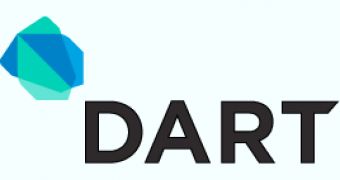Dart, Google's programming language designed to replace JavaScript, is making its debut with the introduction of an "early preview" of the language.
Google has high hopes for Dart, but since this is the first public release of anything related to the actual code it remains to be seen whether it achieves what Google set out to do.
Perhaps more importantly, it also remains to be seen whether the community will adopt it and start using it in any meaningful numbers.
"Today we are introducing an early preview of Dart, a class-based optionally typed programming language for building web applications," Lars Bak, a software engineer on the Dart Team, announced.
Google still has some work to do on Dart, it's been working on it for quite some time too, it was initially called Dash. But it is comfortable enough with what it's got ready to release it to the public.
Dart was created to replace JavaScript as the de facto programming language of the web, in particular for web applications.
Google believed that some of JavaScript's limitations were impossible to overcome by evolving the language, so it created its own.
It's not the first time Google, which has some of the world's best software engineers but also a very company-centric vision many times, has went at it alone and created new technologies, in the dark, to replace standard ones.
Native Client, another, as-yet-unproven, web technology from Google, is a perfect example of that.
Google had several high goals with Dart:
- Create a structured yet flexible language for web programming; - Make Dart feel familiar and natural to programmers and thus easy to learn; - Ensure that Dart delivers high performance on all modern web browsers and environments ranging from small handheld devices to server-side execution. "Dart targets a wide range of development scenarios: from a one-person project without much structure to a large-scale project needing formal types in the code to state programmer intent. To support this wide range of projects, Dart has optional types," Google explained.
Dart code can be run in two ways, either through a virtual machine, which runs on top of a JavaScript engine, or by compiling the code as JavaScript which is then run natively.
Google is working on building a Dart virtual machine into Chrome. Convincing any of the other browser makers to do the same may prove harder.
This is why the option of converting Dart code into JavaScript is important, but it remains to be seen how much of a performance hit this will mean. Of course, the virtual machine presumably adds a lot of overhead of itself.

 14 DAY TRIAL //
14 DAY TRIAL //